 2017 Toyota Highlander III (facelift 2016) Dimensions, Size & Specs
2017 Toyota Highlander III (facelift 2016) Dimensions, Size & SpecsMeasurements of the 2017 Toyota Highlander III, engineered for optimal performance and comfort
| Dimensions | |
|---|---|
| Length: | 4890 mm192.5 in16.0 ft |
| Width: | 1925 mm75.8 in6.3 ft |
| Height: | 1770 mm69.7 in5.8 ft |
| Ground Clearance: | 200 mm7.9 in0.7 ft |
| Trunk Capacity: | 269 liter9.5 cu ft |
| Trunk Capacity (Max): | 813 liter28.7 cu ft |
| Weight Specifications | |
| Curb Weight: | 1890-2110 kg4167-4652 lbs |
| Maximal permitted Weight: | 2570-2760 kg5666-6085 lbs |
| Tire Specifications | |
| Rims Sizes: |
|
| Tire Sizes: |
|
The 2017 Toyota Highlander III facelift is a mid-size SUV produced between 2016 and 2019, offering a versatile and spacious option for families and SUV enthusiasts alike. Measuring 4,890 mm (192.5 inches) in length, 1,925 mm (75.8 inches) in width, and 1,770 mm (69.7 inches) in height, this generation strikes a balance between interior comfort and manageable exterior dimensions for urban and off-road use. The vehicle's curb weight ranges between 1,890 kg (4,167 lbs) and 2,110 kg (4,653 lbs), depending on trim and options, while the maximum weight capacity is between 2,570 kg (5,666 lbs) and 2,760 kg (6,083 lbs). This makes it a sturdy and capable SUV suited for a variety of driving conditions.
In terms of cargo space, the Highlander III provides a luggage volume of 269 liters (9.5 cubic feet) with all rear seats upright, expanding significantly to 813 liters (28.7 cubic feet) when rear seats are folded down, offering versatile storage for road trips or daily errands. The SUV also features a ride height or ground clearance of 200 mm (7.9 inches), allowing it to confidently handle rough terrains and provide better visibility on the road.
This generation of the Highlander rides on 18- or 19-inch rims, outfitted with tire sizes of 245/60 R18 or 245/55 R19, contributing to its solid road grip and comfortable ride quality. Overall, the 2017 Toyota Highlander III facelift delivers a well-rounded blend of spaciousness, practical dimensions, and robust performance suitable for families needing a reliable mid-size SUV with ample cargo space and moderate off-road capabilities.
Discover the standout features that make the 2017 Toyota Highlander III a leader in its class
Have a question? Please check our knowledgebase first.
The 2017 Toyota Highlander III (facelift 2016) has precise exterior dimensions that balance style and functionality, making it a well-proportioned SUV in the midsize segment. The length measures 4890 mm (192.5 inches), offering ample space for passengers and cargo without being overly large for urban driving. Its width is 1925 mm (75.8 inches), providing stability on the road while accommodating comfortable seating arrangements inside. The vehicle stands 1770 mm tall (69.7 inches), ensuring a commanding road presence with sufficient headroom for passengers. These dimensions contribute to a well-rounded SUV that fits most daily driving and family needs.
At 1925 mm (75.8 inches) wide, the 2017 Toyota Highlander III (facelift 2016) falls within the typical width range for midsize SUVs, which generally vary between 1850 mm to 1950 mm (72.8 to 76.8 inches). This width provides a good balance between interior spaciousness for three-row seating and exterior manageability in urban and suburban environments. The Highlander's width ensures it can comfortably accommodate three passengers in the rear bench while maintaining maneuverability. Compared to competitors like the Honda Pilot or Ford Explorer, the Highlander's width is comparable, offering similar cabin space and road presence.
The 2017 Highlander III facelift features a ride height or ground clearance of 200 mm (7.9 inches). This clearance is suitable for moderate off-road driving and rough terrain, giving the vehicle the ability to clear obstacles such as rocks and uneven surfaces without damaging the undercarriage. While it is primarily designed as a family SUV focused on on-road comfort and safety, this ground clearance enables the Highlander to handle gravel roads and mild off-road conditions with confidence. However, it should not be considered a hardcore off-roader compared to purpose-built SUVs with higher clearance.
The luggage capacity of the 2017 Toyota Highlander III facelift is designed to accommodate diverse storage needs. With all seats in use, the Highlander provides 269 liters (approximately 9.5 cubic feet) of cargo space behind the third row, sufficient for grocery shopping or small luggage. When the rear seats are folded down, cargo volume significantly increases to 813 liters (around 28.7 cubic feet), allowing for transportation of larger items such as bicycles, camping gear, or multiple suitcases. This flexibility in cargo configuration makes the Highlander practical for both everyday errands and weekend adventures.
The curb weight of the 2017 Toyota Highlander III facelift ranges from 1890 kg to 2110 kg (4,168 to 4,653 pounds), depending on the trim and equipment. A higher curb weight tends to improve ride stability and ride comfort by giving the SUV a solid, planted feel on the road, which enhances handling during highway cruising and reduces road noise intrusion. However, this weight range can also lead to slightly reduced fuel efficiency compared to lighter vehicles in the segment due to increased inertia and energy needed for acceleration. Toyota balances these trade-offs by offering hybrid options and efficient engines, ensuring the Highlander remains competitive in fuel economy while offering a comfortable and safe driving experience.
Yes, the 2017 Toyota Highlander III facelift can fit into a standard residential garage, but with some consideration. Standard garage door widths typically range from 2400 mm to 3000 mm (94.5 inches to 118 inches), and garage depths range from 5400 mm to 6100 mm (213 inches to 240 inches). Given the Highlander's width of 1925 mm (75.8 inches) and length of 4890 mm (192.5 inches), it fits comfortably within most single-car garage dimensions with space remaining for door clearance and walking around the vehicle. However, the owner should account for additional width if equipped with wider mirrors or roof racks.
The 2017 Toyota Highlander III facelift shows modest but meaningful updates over its predecessor, the second-generation Highlander. Dimensionally, the third generation is slightly larger, with an approximate increase in length and width that enhances cabin space, particularly for the third row of seats. The 2017 facelift model maintains a length of 4890 mm (192.5 inches) and a width of 1925 mm (75.8 inches), reflecting a comfortable yet robust presence compared to the previous generation, which was roughly 4785 mm (188.4 inches) long. The curb weight of the third generation ranges between 1890 and 2110 kg (4168 to 4653 lbs), generally heavier than the earlier model due to added safety features, luxury options, and structural reinforcements for improved crashworthiness and comfort. Overall, the upgrades bring increased practicality and refinement.
Among midsize SUVs, the 2017 Toyota Highlander III facelift competes strongly in terms of exterior dimensions and cargo flexibility. Its length of 4890 mm (192.5 inches) and width of 1925 mm (75.8 inches) place it comfortably in the middle of the segment, providing more room than some rivals such as the Nissan Murano but slightly less than larger vehicles like the Chevrolet Traverse. Its cargo capacity with rear seats folded (813 liters or 28.7 cubic feet) is competitive though some rivals may offer larger maximum cargo volumes owing to different interior packaging. However, the Highlander consistently scores high for balance between passenger comfort, utility, and maneuverability. Additionally, its efficient use of interior space and available hybrid powertrain options make it a pragmatic choice.
The 2017 Toyota Highlander III facelift comes equipped with rim sizes of either 18 or 19 inches, paired with tire dimensions of 245/60 R18 or 245/55 R19. Larger 19-inch rims with lower profile tires (245/55 R19) generally enhance the vehicle's handling capabilities by providing better road contact and sharper steering response, which improves stability and cornering precision. However, the tradeoff can be a slightly firmer ride with more road noise on rough surfaces compared to the 18-inch wheel setup. The 18-inch wheels with 245/60 R18 tires tend to offer a more comfortable ride, absorbing bumps and vibrations better, making them well-suited for everyday urban and highway driving.
The 2017 Toyota Highlander III facelift has a maximum weight capacity (Gross Vehicle Weight Rating, GVWR) ranging from 2570 kg to 2760 kg (5,668 to 6,082 pounds). This rating includes the total weight of the vehicle, occupants, cargo, and any trailer tongue weight. The relatively high maximum weight capacity supports a considerable payload, allowing the SUV to carry multiple passengers and cargo comfortably without exceeding design limits. In terms of towing, this carries implications for what the Highlander can safely tow, which typically ranges around 1500 kg (3,300 lbs) for non-hybrid models. Drivers should always consult specific towing guidelines to ensure safe loading and avoid compromising vehicle dynamics or safety.
Discover similar sized cars.
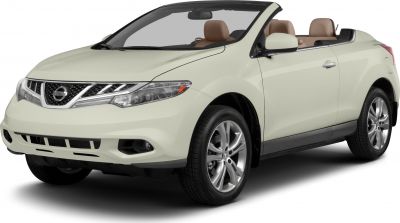
| Production: | 2010-2014 |
|---|---|
| Model Year: | 2011 |
| Length: | 4829 mm190.1 in |
| Width: | 1892 mm74.5 in |
| Height: | 1681 mm66.2 in |
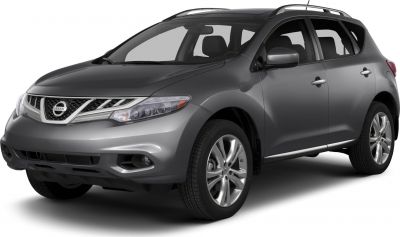
| Production: | 2010-2014 |
|---|---|
| Model Year: | 2010 |
| Length: | 4860 mm191.3 in |
| Width: | 1885 mm74.2 in |
| Height: | 1720 mm67.7 in |
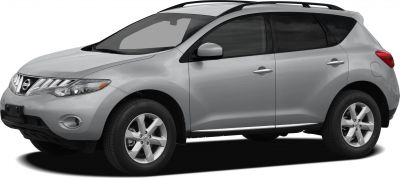
| Production: | 2008-2010 |
|---|---|
| Model Year: | 2009 |
| Length: | 4860 mm191.3 in |
| Width: | 1885 mm74.2 in |
| Height: | 1720 mm67.7 in |
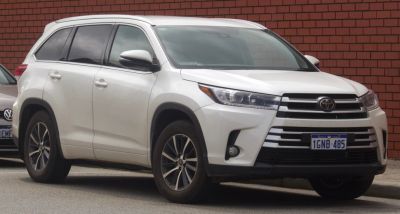
| Production: | 2016-2019 |
|---|---|
| Model Year: | 2017 |
| Length: | 4890 mm192.5 in |
| Width: | 1925 mm75.8 in |
| Height: | 1730 mm68.1 in |
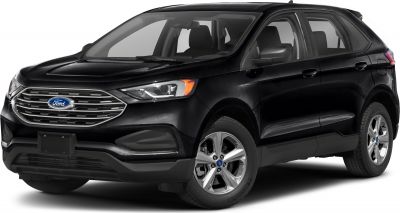
| Production: | 2021-2023 |
|---|---|
| Model Year: | 2021 |
| Length: | 4878 mm192.0 in |
| Width: | 1925 mm75.8 in |
| Height: | 1734-1770 mm68.3-69.7 in |
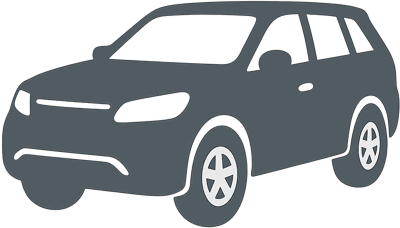
| Production: | 2024-present |
|---|---|
| Model Year: | 2025 |
| Length: | 4920 mm193.7 in |
| Width: | 1930 mm76.0 in |
| Height: | 1760 mm69.3 in |

| Production: | 2013-2018 |
|---|---|
| Model Year: | 2014 |
| Length: | 4886-4908 mm192.4-193.2 in |
| Width: | 2184 mm86.0 in |
| Height: | 1762 mm69.4 in |
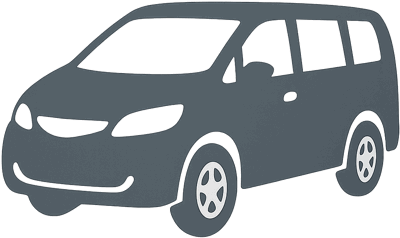
| Production: | 2020-2023 |
|---|---|
| Model Year: | 2020 |
| Length: | 4859 mm191.3 in |
| Width: | 2128 mm83.8 in |
| Height: | 1681 mm66.2 in |
